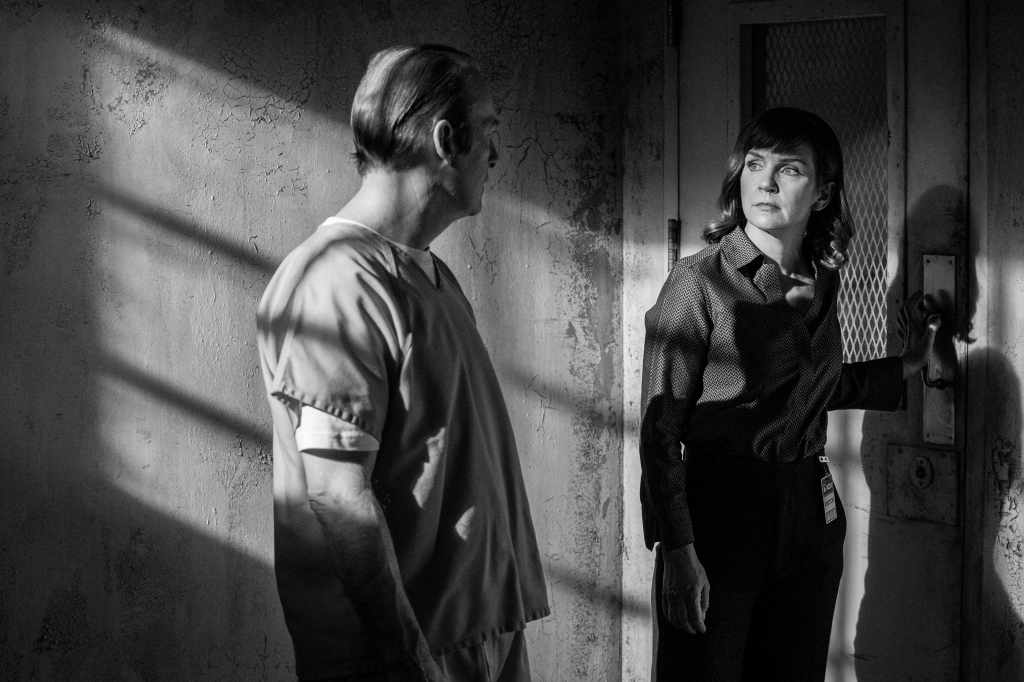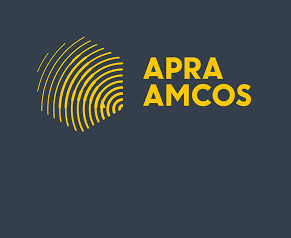SPOILER ALERT: Do not read if you have not watched the series finale of “Better Call Saul,” titled “Saul Gone.”
The morning after “Better Call Saul” fans were left reeling from the series finale on Monday night, stars Bob Odenkirk, Rhea Seehorn and co-creator Peter Gould held a virtual press conference to answer questions about the buzzy final that’s had everybody dissecting closely.
In the last moments of the finale, we see Saul Goodman (Odenkirk) end up in prison with an 86-year sentence. However, even though he’s behind bars, he gets a final warm moment with Kim Wexler (Seehorn), sharing a cigarette with her and leaning against a wall. It mirrors the exact same moment from the series premiere, which Gould said was intentional.
“Hopefully it’s not excessively cute on our part,” he told reporters. “I think the characters are doing it on purpose. This is something we’ve seen them do before. It’s a sign to each other there’s still something between them — that there always was.”
“It was the easiest scene we ever shot,” Odenkirk added. “It was a lot of feelings from six years of working with each other. It’s one of the few times where one of them isn’t trying to manipulate the moment, push some argument in some direction. There are moments where they’re watching a movie together and they’re very relaxed and comfortable. This was deeper than that. They’re two people who belong together, which is great for a long-term relationship.”
Seehorn said the cigarette scene was the very last scene they shot in the series.
“This is them at their best,” she told reporters. “[It’s a] horrible place, but they’re without artifice and armor, sort of maskless with each other, which is the best part of their relationship. Bob was very caretaking, steadying her hand. He tries to make her laugh a little bit, to make sure she knows it’s OK. It’s such an economic scene. Peter is so great not overwriting it: trusting us and the audience.”
And Gould also revealed that, yes, the cigarettes were real: “Both Bob and Rhea were coughing. I had cigarette smoke down my throat for a couple days after. It looks so damn cool, but it’s not good for you.”
Even though the post-“Breaking Bad” sequences were shot in black and white, there were two flashes of color that were easy to miss. The first was in the penultimate episode, when Marion (Carol Burnett) revealed to Saul that she discovered his lawyer commercials and they were reflected in color in Saul’s glasses. Then during the finale’s cigarette scene, the cigarette itself and the flame were in color, harkening back to the beginning of Saul and Kim’s relationship.
“It started out in the pilot of ‘Better Call Saul.’ Gene’s watching his old commercials and they’re reflected in color,” Gould said. “The way I read that, that’s where his passion is, his nostalgia for the man he used to be. His nostalgia for Saul, not for Jimmy. It’s a callback and rubbing his face in it a little bit, when he’s seeing those reflections in Episode 12. In Episode 13, it’s different. I’m glad you spotted it, we made it very subtle, the color in the flame and cigarette. I wanted to make sure everyone was watching the wonderful performances by Bob and Rhea and not getting distracted by technical artifice. It’s more about, this is the one bit of color in his world, his relationship with Kim. He’s the one person who sees him as he is and as he was. Each use of color is a little bit different. It just felt right.”
Gould also revealed what was left on the cutting room floor of the finale, which was “considerably longer” than the final cut.
“There were some directorial flourishes that got cut,” he told reporters. “A couple scenes of the chase in the opening we took out…I was on the bubble about the very last scene in the prison yard. There was a version that didn’t have that; it ended with the two of them smoking. I went back and forth on that. It felt more honest to have the two of them apart instead of together.”
After Walt (Bryan Cranston) dies in “Breaking Bad” and Jesse runs free in the spinoff movie “El Camino,” Gould said he’s satisfied with how all three of the protagonists had a different ending. Plus, “Better Call Saul” ran for 63 episodes, compared to “Breaking Bad’s” 62 episodes.
“I think we had an image in Season 4 or 5 that [Saul] would end up in jail,” Gould told reporters. “At that point, Vince [Gilligan] was out of the room working on ‘El Camino’ and he pitched potential endings to ‘El Camino’ and one of them was very similar to this, except for Jesse. It was beautifully pitched. I got a cold breeze on my back, because I felt so strongly the right ending for Saul was to be in the system that he’s made light of and twisted around for his own purposes…In terms of the trilogy of the shows, it feels very elegant that Walt dies, which he was always going to do. He dies on his own twisted terms. Jesse suffers greatly. He’s in a prison of his own and he gets away and starts healing. And Jimmy gets his soul back, but he’s incarcerated. That just felt right, the three protagonists, they each have their own ending.
“Our show had an extra element: Kim Wexler. She has a hopeful ending, in my book. It throws ‘Breaking Bad’ and ‘El Camino’ into a different light. This show acts as prequel and sequel, plus we did one episode more than ‘Breaking Bad,’ so there’s that.”
From Variety US


































